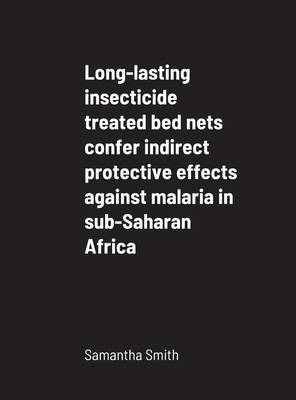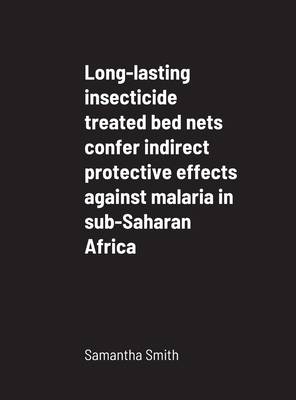
- Afhalen na 1 uur in een winkel met voorraad
- Gratis thuislevering in België vanaf € 30
- Ruim aanbod met 7 miljoen producten
- Afhalen na 1 uur in een winkel met voorraad
- Gratis thuislevering in België vanaf € 30
- Ruim aanbod met 7 miljoen producten
Zoeken
Long-lasting insecticide treated bed nets confer indirect protective effects against malaria in sub-Saharan Africa
Samantha Smith
Hardcover | Engels
€ 30,45
+ 60 punten
Omschrijving
The purpose of the project was to evaluate the indirect and direct protection conferred by community-level use of insecticide treated bed nets (ITNs) on occurrence of malaria in children under the age of five in sub-Saharan Africa. A total of 32 336 children under five were included in this cross sectional study of publically available Malaria Indicator Survey data collected between 2009 and 2017. Preliminary analyses identified confounding effects of household socioeconomic status, maternal education, urbanity, age of bednets, existence of standing water located near the respondents, and IRS use. For each country and corresponding year, the crude and adjusted odds ratios along with direct, indirect and total effects of ITN use were estimated. Neighborhood coverage levels of 50-100% and the use of an ITN prevented 8.1 (95% CI: 4.8 -11.1) cases per 100 children under 5, supporting the presence of protective total effects. The overall estimate of direct effects indicated that individuals who lived in a neighborhood coverage between 0-25% and 25-50% ITN coverage and were considered ITN users had a reduction of 2.9 malaria cases per 100 children compared to ITN non-users (95% CI: 0.9-4.7 and 0.7-4.8, respectively). Living in a neighborhood with 50-100% ITN coverage resulted in a reduction of 6.1 cases per 100 children for ITN non-users (95% CI: 2.7-9.7), supporting that there was significant indirect protection. Results for country and year specific data varied for total, direct, and indirect effects.
Specificaties
Betrokkenen
- Auteur(s):
- Uitgeverij:
Inhoud
- Aantal bladzijden:
- 36
- Taal:
- Engels
Eigenschappen
- Productcode (EAN):
- 9781716967399
- Verschijningsdatum:
- 4/05/2020
- Uitvoering:
- Hardcover
- Formaat:
- Genaaid
- Afmetingen:
- 216 mm x 279 mm
- Gewicht:
- 385 g

Alleen bij Standaard Boekhandel
+ 60 punten op je klantenkaart van Standaard Boekhandel
Beoordelingen
We publiceren alleen reviews die voldoen aan de voorwaarden voor reviews. Bekijk onze voorwaarden voor reviews.











